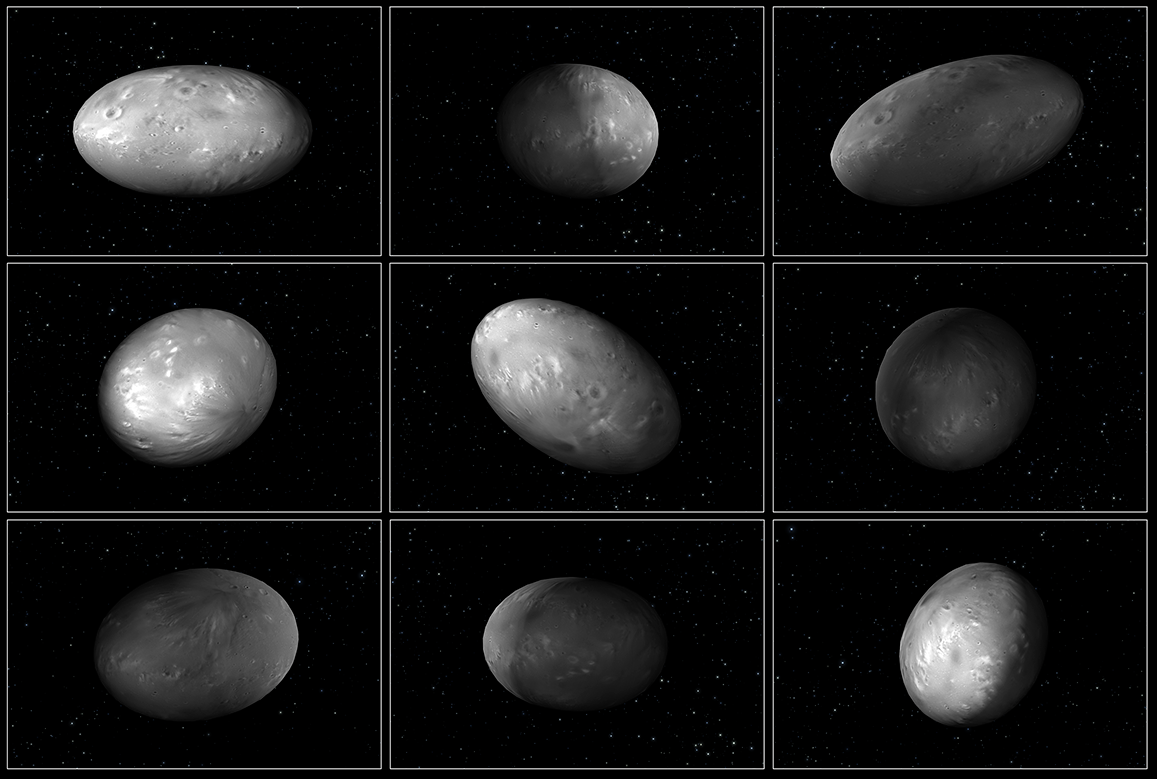If you lived on one of Pluto’s moons, you might have a hard time determining when, or from which direction, the sun will rise each day. Comprehensive analysis of data from NASA’s Hubble Space Telescope shows that two of Pluto’s moons, Nix and Hydra, wobble unpredictably.
“Hubble has provided a new view of Pluto and its moons revealing a cosmic dance with a chaotic rhythm,” said John Grunsfeld, associate administrator of NASA’s Science Mission Directorate in Washington. “When the New Horizons spacecraft flies through the Pluto system in July we’ll get a chance to see what these moons look like up close and personal.”
The moons wobble because they’re embedded in a gravitational field that shifts constantly. This shift is created by the double planet system of Pluto and Charon as they whirl about each other. Pluto and Charon are called a double planet because they share a common center of gravity located in the space between the bodies. Their variable gravitational field sends the smaller moons tumbling erratically. The effect is strengthened by the football-like, rather than spherical, shape of the moons. Scientists believe it’s likely Pluto’s other two moons, Kerberos and Styx, are in a similar situation.
The astonishing results, found by Mark Showalter of the SETI Institute in Mountain View, California and Doug Hamilton of the University of Maryland at College Park, will appear in the June 4 issue of the journal Nature.
Showalter also found three of Pluto’s moons are presently locked together in resonance, meaning there is a precise ratio for their orbital periods. “If you were sitting on Nix, you would see that Styx orbits Pluto twice for every three orbits made by Hydra,” noted Hamilton.
